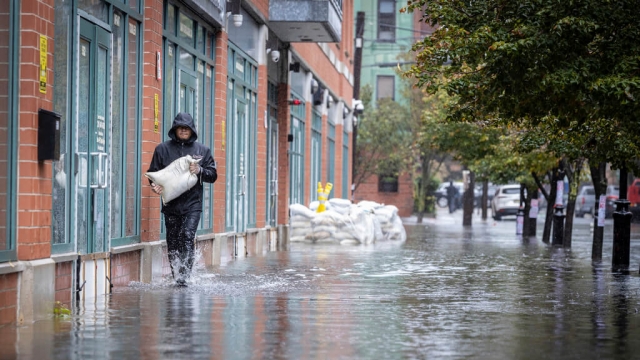A new study revealed millions of Americans are packing up and moving from high flood risk neighborhoods — and millions more are expected to do the same over the next three decades.
A study by the nonprofit First Street Foundation found climate migration trends are triggering the emergence of “climate abandonment areas,” locations that are losing populations as a direct result of climate change-driven flood risk.
“People are starting to take climate into account when they're making decisions around where to live,” said Dr. Jeremy Porter, First Street Foundation Head of Climate Implications.
Climate abandonment areas make up 818,000 neighborhood blocks across the U.S. Between 2000 and 2020, 3.2 million Americans left those areas due to significant flood risks. Experts predict an additional 7.5 million will follow over the next 30 years.
The states most impacted by the uneven growth are Texas, California, Florida and Louisiana, where flood risks are significant and where the study tracked strong population gains. Bexar County, Texas topped the list for a significant shift.
“Between 2000 and 2020, it gained 600,000 people," Porter said. “It grew by about 44%, but yet 18% of the blocks in that county were climate abandonment areas.”
The change in population is impacting property values, neighborhood compositions, and the commercial viability both positively and negatively, according to Porter.
SEE MORE: Atmospheric river soaks Pacific Northwest with record-breaking rain
The report also revealed climate abandonment areas were neighborhoods already facing issues.
“Issues with job opportunities, already had issues with poor schools, already had issues maybe with increased crime in the area,” Porter said.
The flooding risks tracked in the study boiled down to any kind of flooding risk to the property and what many may consider nuisance flooding, like street flooding or property flooding that made it hard to navigate streets and highways. It also included flooding that triggered a potential insurance claim, putting an investment at risk.
At the end of October, Earth recorded its hottest 12-month streak, according to a report by Climate Central.
More heat in the system translates to more moisture in the air from various sources, including oceans and plants.
“If any weather event comes along and is able to squeeze that moisture out, it can lead to more intense downpours,” NOAA Research Meteorologist Kelly Mahoney said.
Intense downpours can lead to flooding if the soil is unable to absorb the water as quickly as it comes down or if drainage in the area is not built to handle intense rainfall.
“For decades we’ve chosen to build and develop in areas that we believed did not have significant risk, but due to the impacts of climate change, those areas are very rapidly beginning to look like areas we’ve avoided in the past," said Evelyn Shu, Senior Research Analyst at the First Street Foundation.
Porter believes understanding the issue can help allocate resources to prepare property owners and help them combat the issue.
SEE MORE: 2023 poised to become hottest year on record
Trending stories at Scrippsnews.com




